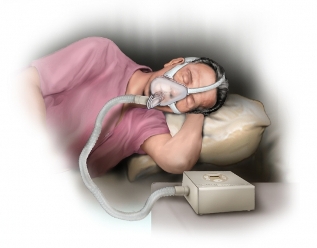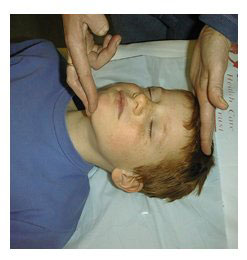Continuous positive airway pressure
Table of Contents
Table of Contents
Are you tired of feeling tired all the time? Do you wake up feeling groggy and struggle to stay awake during the day? It could be that you’re suffering from a sleep disorder. And if you’re an educator, this issue can be particularly problematic, as it can affect your job performance and your ability to provide quality education to your students. But there’s hope - Continuous positive airway pressure therapy (CPAP) has been shown to be an effective treatment option for sleep disorders in educators.
Sleep disorders can be frustrating and debilitating, but they’re more common than you might think. Millions of people around the world suffer from sleep apnea, insomnia, and other sleep disorders that can make it difficult to get a good night’s rest. For educators, this can be especially problematic, as a lack of sleep can negatively impact their ability to focus, stay alert, and provide quality education to their students.
Thankfully, CPAP therapy has been shown to be an effective treatment option for sleep disorders in educators. CPAP therapy involves using a special machine to supply a constant flow of air into your airway, which helps to keep your airway open and prevent interruptions in your breathing while you sleep. This can help to improve the quality of your sleep, reduce daytime fatigue, and improve your overall health and wellbeing.
In summary, CPAP therapy can be a lifesaver for educators who are struggling with sleep disorders. By using a CPAP machine, you can improve the quality of your sleep, reduce daytime fatigue, and improve your overall health and wellbeing. So if you’re an educator who is struggling with sleep issues, don’t hesitate to talk to your doctor about how CPAP therapy can help you get the restful sleep you need.
My Personal Experience with CPAP Therapy
As an educator who struggled with sleep apnea, I was initially hesitant to try CPAP therapy. But after learning about the benefits of this treatment option, I decided to give it a try - and I’m so glad I did! The improvement in the quality of my sleep was almost immediate, and I felt more alert and focused during the day. Plus, knowing that I was taking steps to improve my overall health and wellbeing gave me peace of mind. If you’re an educator struggling with sleep issues, I highly recommend giving CPAP therapy a try.
The Benefits of CPAP Therapy for Educators
CPAP therapy has a number of benefits for educators who are struggling with sleep disorders. By improving the quality of your sleep, you may find that you’re more alert and focused during the day, which can help you provide better education to your students. CPAP therapy can also reduce your risk of developing comorbidities associated with sleep disorders, such as cardiovascular disease, type 2 diabetes, and depression. Plus, using a CPAP machine is a non-invasive and relatively low-risk treatment option, so you don’t have to worry about undergoing surgery or taking medication.
How CPAP Therapy Works
CPAP therapy works by using a machine to supply a constant stream of air to your airway. This helps to keep your airway open and prevents interruptions in your breathing while you sleep. The machine is connected to a mask that you wear over your nose and mouth, which delivers the air to your airway. Most people find that they adjust to using a CPAP machine relatively quickly, and that the benefits in terms of improved sleep quality are well worth the effort.
The Side Effects of CPAP Therapy
Like any medical treatment, CPAP therapy can have some side effects - particularly in the first few weeks of treatment. Some people find that they experience mild discomfort or irritation from wearing the mask, or that they experience nasal congestion or dryness. These side effects usually subside over time, and most people find that the benefits of CPAP therapy far outweigh any temporary discomfort they may experience.
FAQs: Continuous Positive Airway Pressure Therapy and Sleep Disorders in Educators
Q. Can CPAP therapy cure sleep apnea?
A. While there is no cure for sleep apnea, CPAP therapy can help to alleviate the symptoms and improve the quality of your sleep.
Q. Is CPAP therapy covered by insurance?
A. In many cases, CPAP therapy is covered by health insurance - but coverage may vary depending on the specific details of your plan. It’s best to check with your insurance provider to find out more.
Q. How do I know if I have sleep apnea?
A. If you’re experiencing symptoms such as loud snoring, interrupted breathing during sleep, daytime fatigue, or difficulty concentrating, you may have sleep apnea. Talk to your doctor if you’re concerned.
Q. Are there lifestyle changes I can make to improve my sleep quality?
A. Absolutely! Lifestyle changes such as avoiding caffeine and alcohol before bed, establishing a regular sleep schedule, and practicing relaxation techniques like yoga or meditation can all help to improve your sleep quality.
Conclusion of Continuous Positive Airway Pressure Therapy and Sleep Disorders in Educators
If you’re an educator struggling with sleep disorders, don’t suffer in silence. CPAP therapy can be an effective treatment option that can help you get the restful sleep you need to stay alert, focused, and provide quality education to your students. Talk to your doctor today to find out if CPAP therapy is right for you.
Gallery
Continuous Positive Airway Pressure | UVA Health

Photo Credit by: bing.com / pressure positive airway continuous cpap machine medical nucleus copyright inc sleep
Continuous Positive Airway Pressure | Treating Sleep Apnea - YouTube

Photo Credit by: bing.com / airway positive pressure continuous
Continuous Positive Airway Pressure Therapy | Nursing Information

Photo Credit by: bing.com / pressure positive airway continuous education health nursing information therapy choose board
Continuous Positive Airway Pressure (CPAP) Devices Market

Photo Credit by: bing.com / pressure positive airway continuous cpap devices types market machine breathing bipap different insights premium press release
Mechanism Of Action Of Continuous Positive Airway Pressure Therapy IV

Photo Credit by: bing.com / airway mechanism





